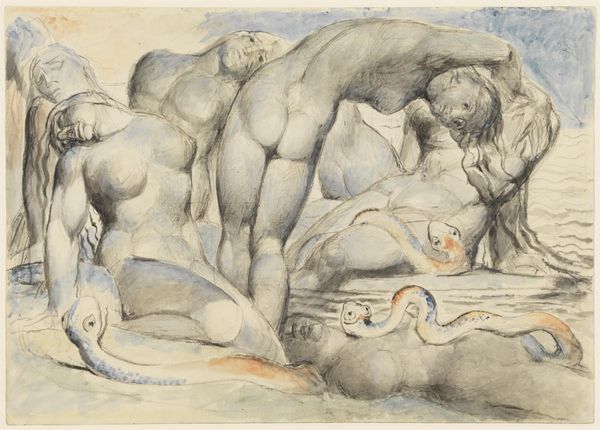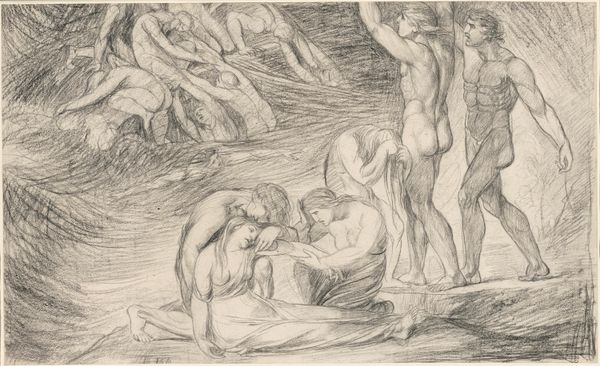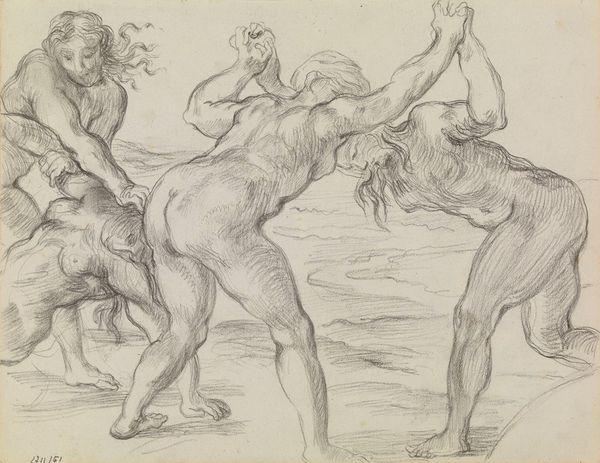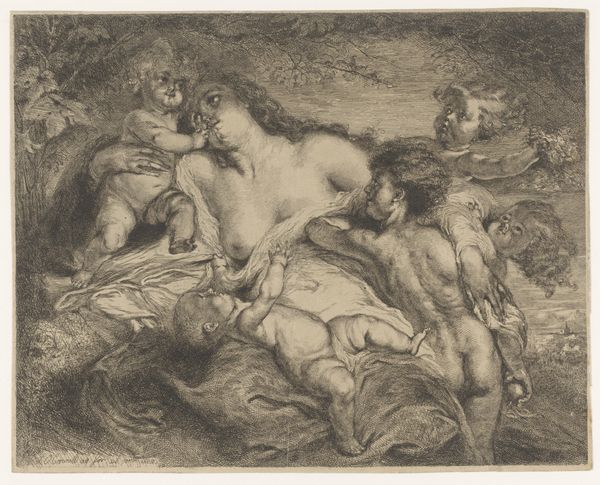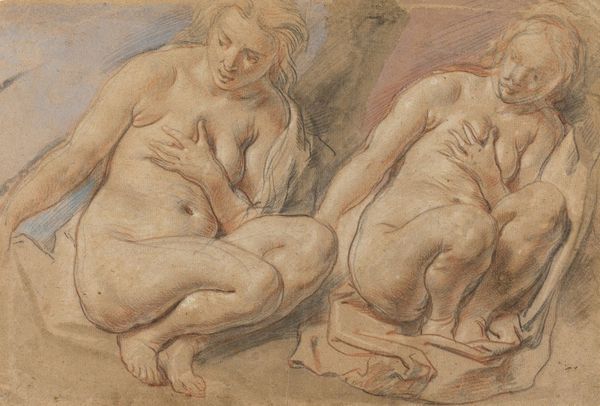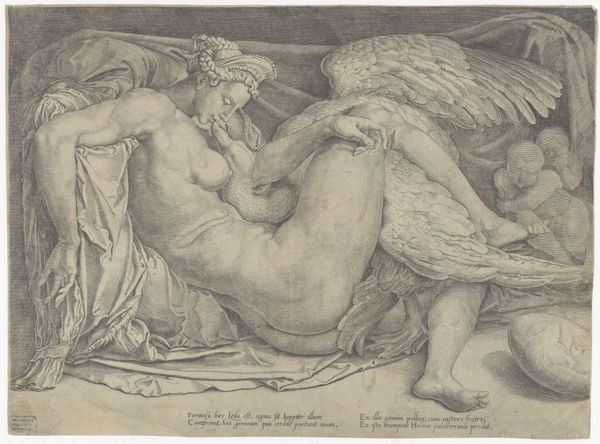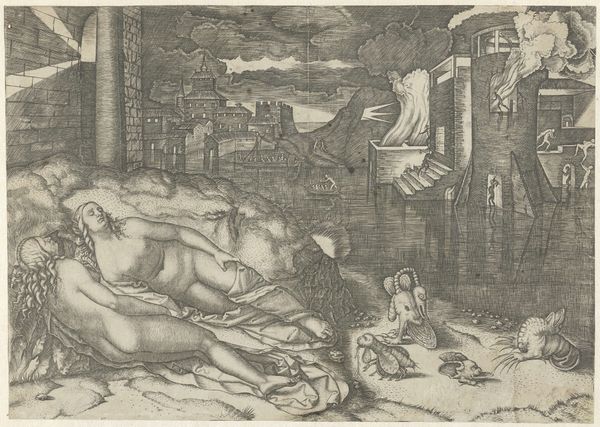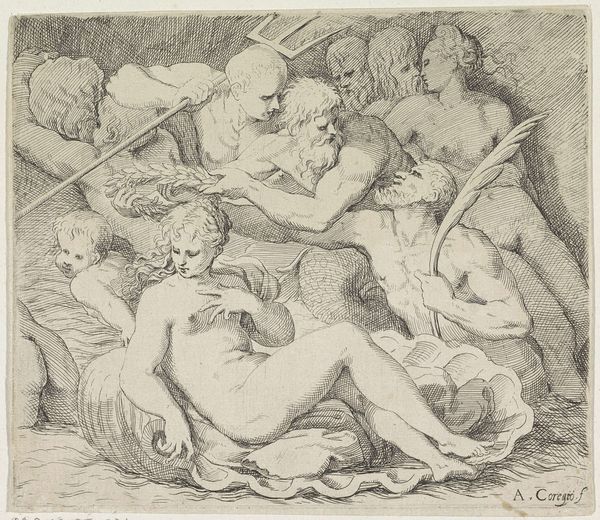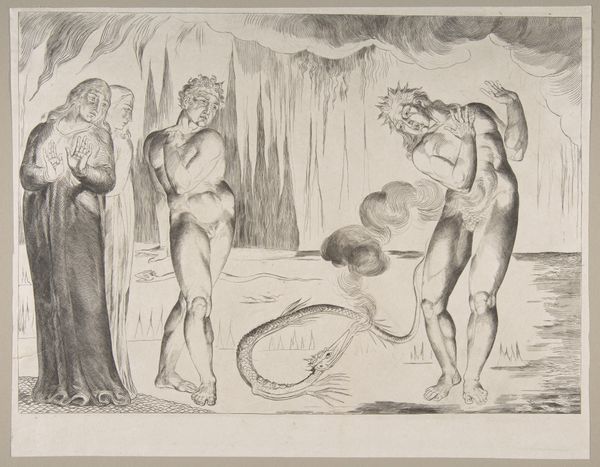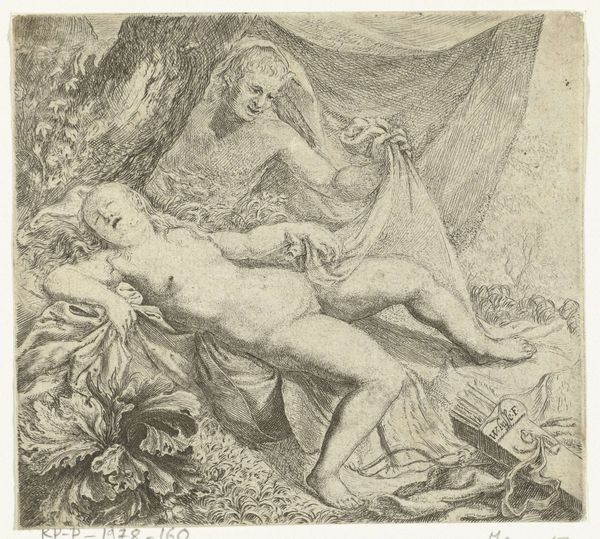
Dimensions: support: 372 x 527 mm
Copyright: CC-BY-NC-ND 4.0 DEED, Photo: Tate
Curator: William Blake’s “The Punishment of the Thieves,” currently residing in the Tate Collections, evokes a sense of profound suffering. Editor: Yes, the muted tones and contorted figures certainly convey a feeling of anguish, almost as if the very materials are struggling. Curator: Blake, born in 1757, often explored themes of morality and justice, reflecting the social and political unrest of his time. The fluid forms hint at the transformative punishment inflicted upon these figures, blurring the lines between human and serpent. Editor: The focus on water and the serpentine forms—what can you tell me about the materiality of the line work? Curator: Considering Blake's radical stance against institutional power, could this scene be interpreted as a critique of societal hierarchies and the oppressive systems that perpetuate theft and exploitation? Editor: An interesting lens through which to consider labor and power in Blake's time. The production of art itself—the paper, the ink—is never neutral. Curator: Precisely. Blake's rendering compels us to confront the consequences of moral transgression within a broader social and political landscape. Editor: Food for thought. A powerful, unsettling vision, expertly crafted. Curator: Indeed, a stark reminder of the intertwined nature of sin, punishment, and the human condition.
Comments
tate 6 months ago
⋮
http://www.tate.org.uk/art/artworks/blake-the-punishment-of-the-thieves-n03364
Join the conversation
Join millions of artists and users on Artera today and experience the ultimate creative platform.
tate 6 months ago
⋮
The heavy musculature of these female figures creates a gender ambiguity that may have implied moral degeneracy to a 19th-century audience. The contorted central body offers a parody of the graceful contraposto of classical statues, while the other cropped or truncated figures lounge about licentiously. Dante describes the thieves being bitten by snakes, creatures that Lavater associates with ‘cunning and treachery’. Here, however, the snakes appear to emanate from the women’s genitals, suggesting that their criminal activity has given birth to an aberration. Gallery label, March 2011
